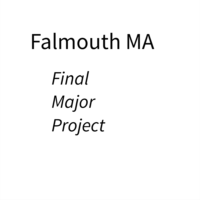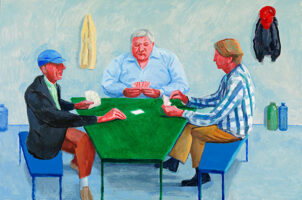I considered the following questions in this week’s reflection:
-
Should photographs resonate with the space / place in which they are viewed? Whether you agree or disagree, try to describe your thoughts about this.
-
Do you think consideration of the space and audience reduces your authorship of the work?
-
How could you get the audience to contribute, rather than participate in, experiencing your work?
Our traditional view of the gallery space is a white cube (O’Doherty, 1976), p15 “describes the construction of a gallery have strict rules that do not allow the outside to enter into the gallery space where the art is free to take on its own meaning”. Creating an anaerobic chamber where the art remains pure and is not altered by the environment. In this situation, there is no opportunity for the space to resonate with the art being viewed either positively or negatively. This maybe is an efficient approach for large galleries where they are rotating exhibits through the exhibition space. This lack context is possibly why readers can feel a gallery space is cold without soul. I would suggest that for specialist exhibitions there is option to place the work in an environment that enhances the meaning of the work being exhibited a good example of the decision to exhibit was Annie Liebowitz’s Women exhibition (annie-leibovitz, 2017) that toured globally and was housed in former industrial building that are traditionally identified as masculine such as the Wapping Hydraulic Power Station, London which in my opinion helped to reinforce the gender equality message that was part of the exhibitions message. Though finding an exhibition space that adds to our understanding of the exhibit could present challenges to the way a touring exhibition is viewed in different locations which is why many galleries default to the concept of a white cube. My own practice draws on the use of layers with each layer providing the reader with additional insight could benefit from the use of non-traditional gallery spaces where the space provides extra context to the body of work I am exhibiting.
The exhibition space can alter the story being told by the images being displayed. I do not feel the involvement of another party reduces the authorship of my work as I would hope that I am working with curators that want to understand my work. Their contribution ideally should not diminish or reduce my story rather their engagement with my work should add a further layer of meaning / understanding to the work. It is possible that the curator activities could take the story in a different direction than the one I had originally envisioned which I view as enhancing the story. When you place work into the public domain you must accept that others are likely to find alternative stories in your work but those voices add to the authors voice.
As author and curator, we provide on reading of the exhibition by selecting specific images to display, size of the images, the order of exhibits information associated with the exhibit. Traditionally galleries and exhibitors ask that people viewing the work do not take pictures however that approach means that you are asking them to be passive participants of the exhibition. Changing the way, the exhibition is displayed or exhibited means that you can encourage them to contribute to the exhibition. The contribution element could take many different forms. It could be encouraging viewers to photograph themselves interacting with the art or using social media to contribute to the narrative associated with the images. One example is to use q-codes that can be scanned to take the person to a website where they can place comments against the image on a virtual wall. This is a concept that I will explore with my Work in Progress exhibition in August.
References
- annie-leibovitz. (2017). WOMEN: New Portraits by Annie Leibovitz – Tour Stops. [online] Available at: https://www.ubs.com/microsites/annie-leibovitz/en/tour/all-cities.html [Accessed 5 Jul. 2017].
- O’Doherty, B. (1976). Inside the white cube. [Larkspur, Ca.]: Lapis Press.




Pingback: London Photo Show – Print Selection
Pingback: London Photo Show - Print Selection - Simon Fremont